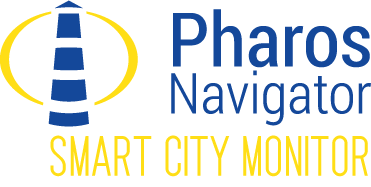Particulate Matter (PM): Health Concerns and Possible Solutions
_%20Health%20Concerns%20and%20Possible%20Solutions.jpg)
What is Particulate Matter?
Simply put, particulate matter is a complex composition of chemicals, derived from various emissions. They are airborne in nature and can be from natural or anthropogenic sources. Particulate matter is defined by a diameter, so in the case of PM10, it means that particles are 10 microns or less in diameter. PM 2.5 is a subset of PM10 with a diameter of 2.5 microns or less. Both are hazardous to human health and the environment in general.
This ambient dust which swirls around us daily, as we move around and about our cities, is made up of particles so fine it would take 40 of these particles just to cover the width of one strand of hair! Not only do we inhale PM with every breathe we take, when we are outdoors, but we are also contributing to these PM concentrations by being complacent and dependent on outdated systems of waste management and transportation.
In urban areas the main sources of PM10 and PM2.5 are anthropogenic. Primary particles come from exhaust fumes, wood and waste burning activities as well as from construction sites where much stone is crushed. These forms of PM get released directly into the air like smoke and dust. Secondary particles form in the air from chemical reactions caused by sulfur dioxide and nitrogen dioxide emissions from industrial sites, power plants and transport. Carbon emissions, again from transportation and burning activities, add to the mix.
Measuring PM concentrations to achieve Air Quality Standards.
The World Health Organization has provided international guidelines for what are to be considered the safest levels of the various emissions, which all contribute to the overall PM concentrations, but they are only guidelines and are not legally binding.
Three main criteria are needed to control and reduce PM concentrations.
1. Monitors: Monitoring air quality data, by various agencies, using various methodologies, are crucial to form a scientific basis for policy and strategy development.
2. Indicators: Indicators measure progress and monitor implementation. Indicators must also establish support and provide tools to aid the process and to create public awareness and support.
3. Data: Consistent, accurate data must be collected for the air quality to be regulated and for standards to be met.
Reducing PM levels, city by city
By designing new cities, or restructuring and upgrading existing ones, emissions could be drastically reduced. Innovative leaders will focus on:
• Developing clean technologies, for example, to reduce industrial smokestack emissions.
• Changing the methods and management of waste, both urban and agricultural. Reducing burning and replacing with recycling waste into biogas is one example.
• Changing transportation to clean energy options.
• Creating public awareness and making alternative public transport options available.
• Designing cities and urban developments with energy efficiency as the top priority. This means designing recreational and business facilities to run on solar and wind power.
Ambient air quality standards vary from continent to continent and country to country. If each city, and the governance within, were to actively work towards reducing PM levels within their urban domains, not only would human health improve as a whole but costs of health care could be reduced. Ecosystems would be less fragile and climate changes both on a global and local scale would be positively impacted. By reducing emissions, PM levels drop, the air becomes cleaner, fewer people die prematurely, and climate changes are not adversely affected.
Conditions and diseases like asthma, chronic and acute respiratory disease, bronchitis, heart disease, tissue damage and inflammation of the lungs affect people breathing in PM, both in the short term and long term.
Unless you live in a city with strict Ambient Air Quality Standards, it may not be such a bad idea to adopt the Japanese and Chinese habits of wearing a surgical mask when commuting to and from in densely populated cities, where air pollution has not yet been arrested.
Approaches to PM monitoring: Tools and Standards
There major international standards such as ISO 37120 “Sustainable development of communities — Indicators for city services and quality of life" sets the indicator PM concentration as core indicators. It is advised to set 24-hour (daily) measurements of PM concentrations and forwarded measurements to a database for yearly summaries for each monitoring stations.
In “Smart Urbana” project one use case was about “Air Quality monitoring accordingly to ISO 37120:2014” with the support from Smart City Monitor platform. Some cities have already installed air quality sensors that can be used for air quality monitoring. The use case demonstrated the importance of holistic monitoring and analytics of the PM monitoring for citizens and city administrations, as well as other air quality components in real time and online. The resulting evidence data are stored and always available for relevant benchmarks.
Read more:
Smart Urbana Air Quality use case in detail
WHO Ambient (outdoor) air quality and health
Standards - Air Quality - Environment - European Commission
The European Environment Agency: European Air Quality Index
Applying novel digital transformation tools to urban innovation and improving quality of life: Smart City Monitor
2025 © GOLEM IMS GMBH, Austria. ALL Rights Reserved.
Terms of Service |
Privacy Policy
Made in Austria

